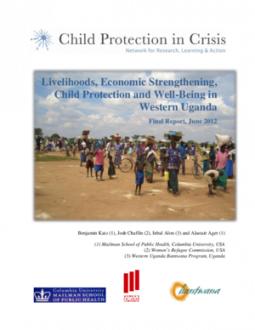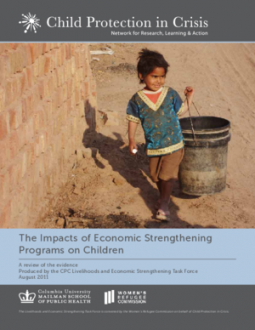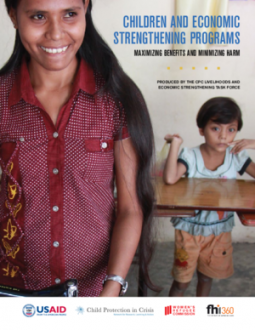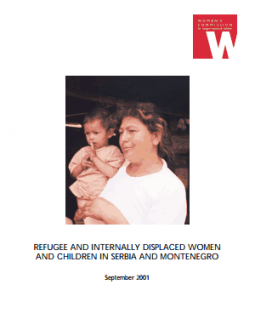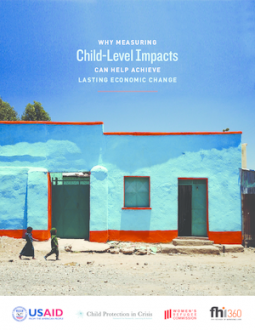
Why Measuring Child-Level Impacts Can Help Achieve Lasting Economic Change
PublishedThis paper is intended as a starting point for discussion and advocacy around measuring the impacts of economic strengthening on children, in order to ensure their wellbeing and break the cycle of intergenerational poverty.
STRIVE and the Child Protection in Crisis (CPC) Network* seek to launch a wider evidence-based discussion in the development community about the role of children and youth in achieving the goal of sustainable poverty alleviation.
BACKGROUND
Since 2008, STRIVE and the CPC Network have engaged in research, implementation and evaluation of economic strengthening programs intended to positively affect the lives of children in adversity. In 2011, the CPC Network published “The Impacts of Economic Strengthening on Children: Review of the Evidence,” which reviewed 43 impact studies and methodically documented the known impacts of economic strengthening programs on the wellbeing of children (0-18 years) in crisis contexts in low-income countries. STRIVE has experience implementing, monitoring and evaluating economic strengthening projects that aim to improve the well-being of vulnerable children and youth in Afghanistan, Liberia, Mozambique and the Philippines. STRIVE’s research agenda includes two rigorous mixed-method impact evaluations of household and child-level outcomes associated with economic strengthening programs in Mozambique (village savings and loan associations and a rotating labor scheme) and Liberia (strengthening of the horticulture value chain and smallholder rice farming). Analysis is underway, and results will be shared in 2014.
*The Women’s Refugee Commission is a member of the CPC Network.


